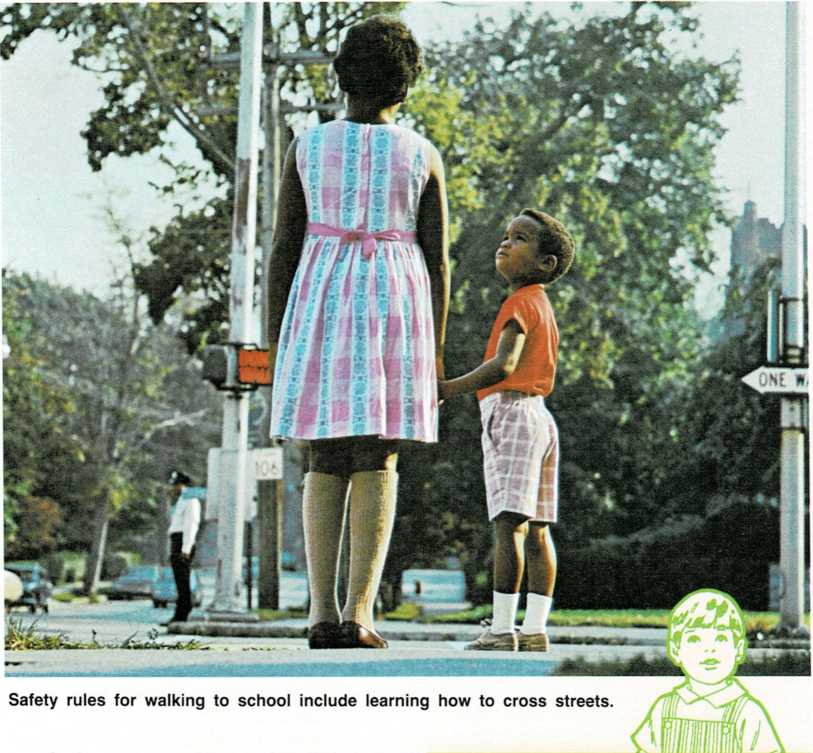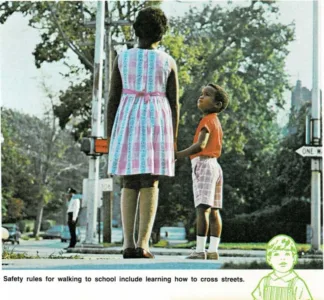Health and safety

It is important that children have a physical examination before
entering school. Many school systems require children to have boosters
for diphtheria, tetanus, pertussis, polio, and tuberculin skin tests.
Eye, ear, and teeth examinations are encouraged at this time. Children
whose problems are found and corrected before they enter school will
live and learn with greater zest than the children with eye, ear, or
teeth defects.
Safety
Getting to school is one of the most important events of the day for
school-age children. Before children start to school, parents or older
children should walk with them from home to school so that the children
can learn the route and what entrance of the school to use. The parents
or older children should emphasize the correct way of crossing
streets—crossing only at corners, obeying school patrols and crossing
guards, observing traffic signals, and watching for traffic.
Parents should teach their children to go directly to and from school
without stops or side trips. They should also teach their children never
to accept rides from strangers and never even to stop to talk with
strangers. Parents should not, however, give these instructions in a
frightening manner, but should give them matter-of-factly—as part of
the children’s learning about their new role and their new
responsibilities. Five-year-old children should know their full name and
street address before they go to school, in case they get lost.
Some parents prefer to walk with their children during the first days of
kindergarten, to make certain that they know the way. Some children are
fortunate to have classmates and walking companions on the same block.
But even if two reliable 5-year- olds go together, it is reassuring to
send them with an older child as an escort.
Even then, there can be complications. An older child who is escorting a
younger one may regard the younger as a burden and make the journey an
unhappy one. An older brother or sister may look on the younger child as
a special possession and become so bossy that the younger child protests
bitterly. Check carefully on any such arrangement rather than taking for
granted that all is the way you want it to be.
In some communities, children in kindergarten and the primary grades
regularly ride to school on the school bus. Generally, children are
picked up by these buses at designated corners along the route. Check to
see that someone on board is responsible for helping the younger
children board and exit. It is also important to know whether the school
vehicle is in good condition, whether the driver is reputable and
qualified, and whether the roads traveled are safe from unusual hazards.
If you have any doubts, talk them over with a school official.
Children of this age are particularly in danger from traffic when it is
dark outside. They do not realize as they walk along dimly lit roadways
that motorists have difficulty seeing them. You can purchase
retroreflec- tive materials that make the child easier to

see. Such materials reflect the headlights of approaching
automobiles. Retroreflective materials come as tape or tags that can
be attached to clothing or bicycles.
Here are some common illnesses you may encounter with your school-age
child.
Each illness is discussed in a separate article in the Medical
Guide.
Common illnesses and conditions
Communicable diseases are quite common during the school-age years. Some
of these illnesses can be avoided by vaccination, but parents of
school-age children must learn to take in stride the usual run of colds,
sore throats, and coughs.
If your child has been exposed to a communicable disease, the teacher or
school nurse will probably send a note home informing you of the fact
and telling you what symptoms to look for. If your child develops the
symptoms, keep the child home from school and call the doctor.
Illness Symptoms
Chicken pox Fever; blistering rash; cold
symptoms
German Fever; rose-colored rash;
measles cold symptoms
Impetigo Blisterlike sores that form a crust
Measles Five to seven days of high fever, cough, runny nose, and
watery eyes; rash
Mumps Swelling of glands on top
of jawbone and in front of earlobe
Scarlet fever Rash with a rough “goosebump\” feel; scarlet flush
over face and trunk
Strep throat Sore throat; fever

